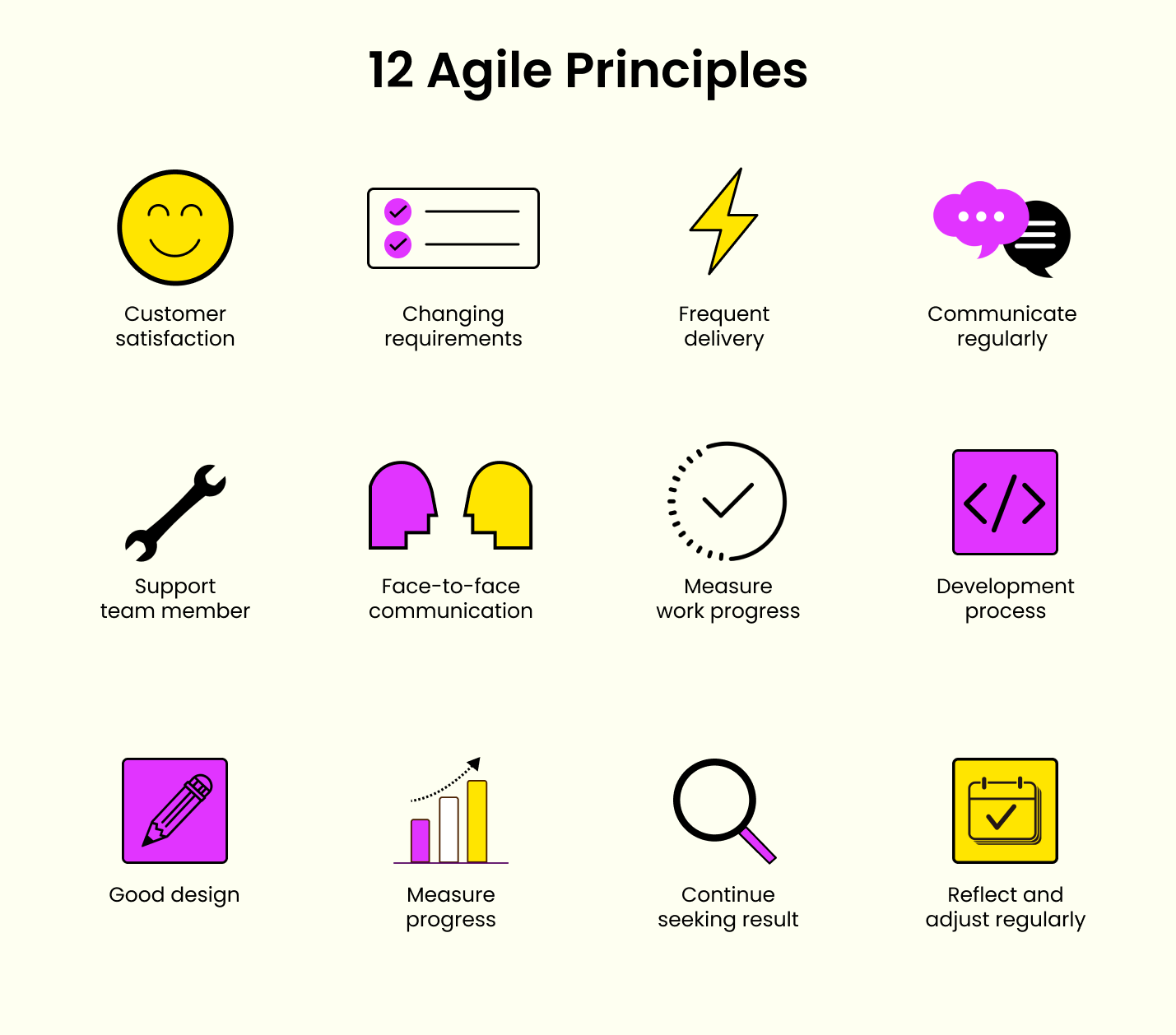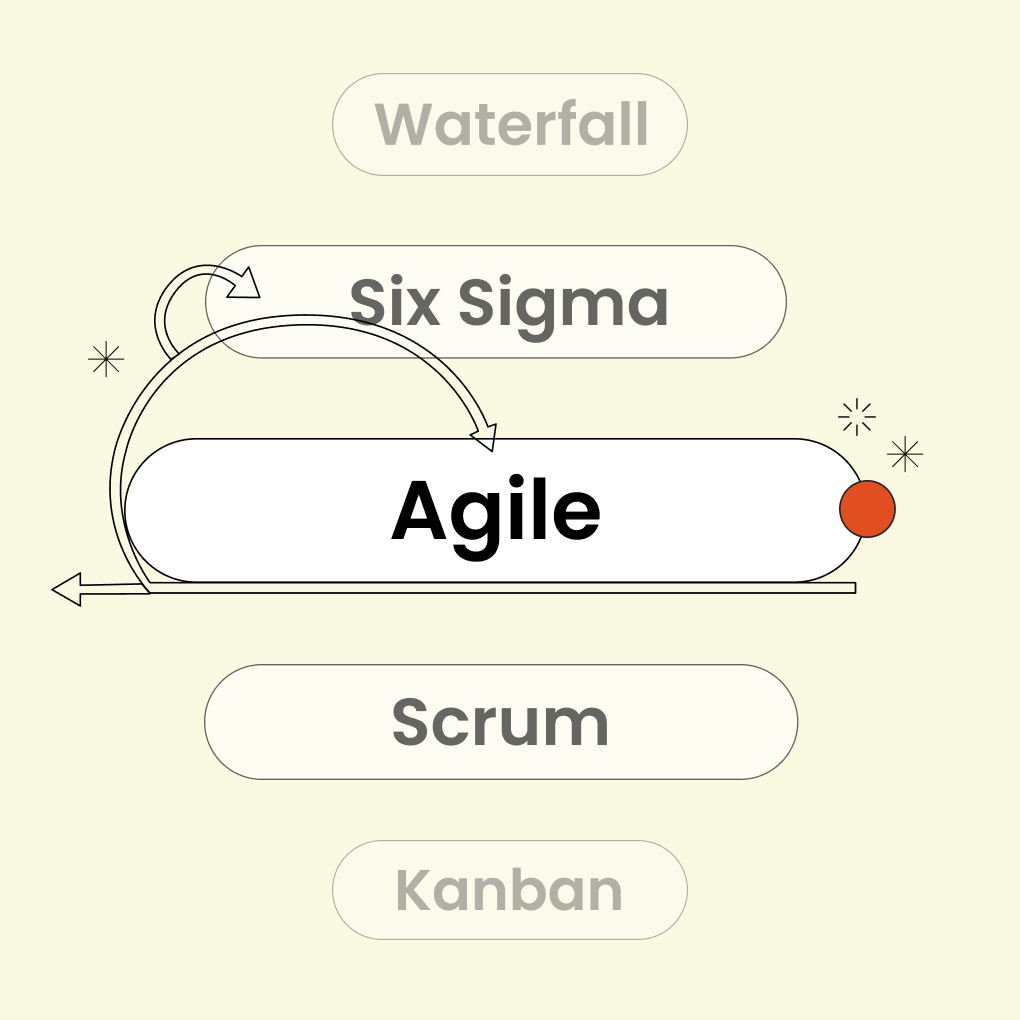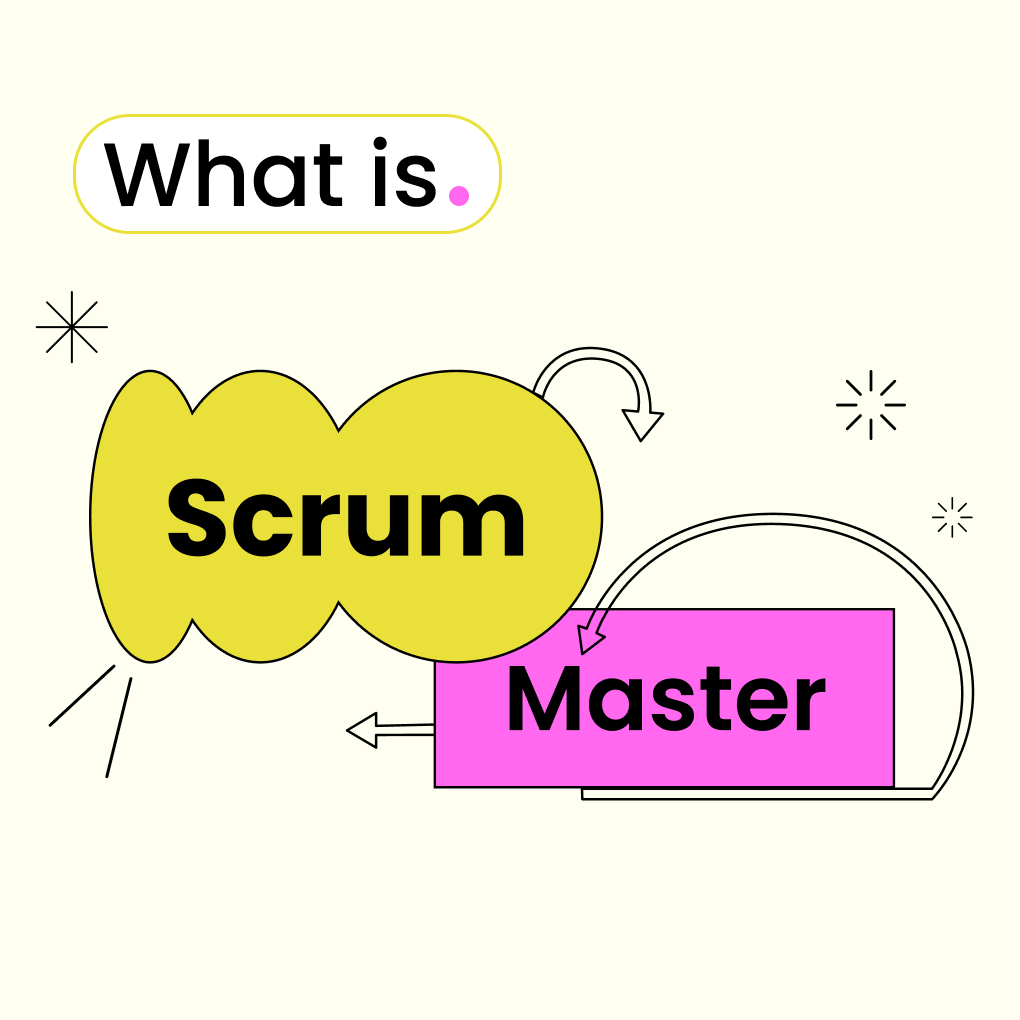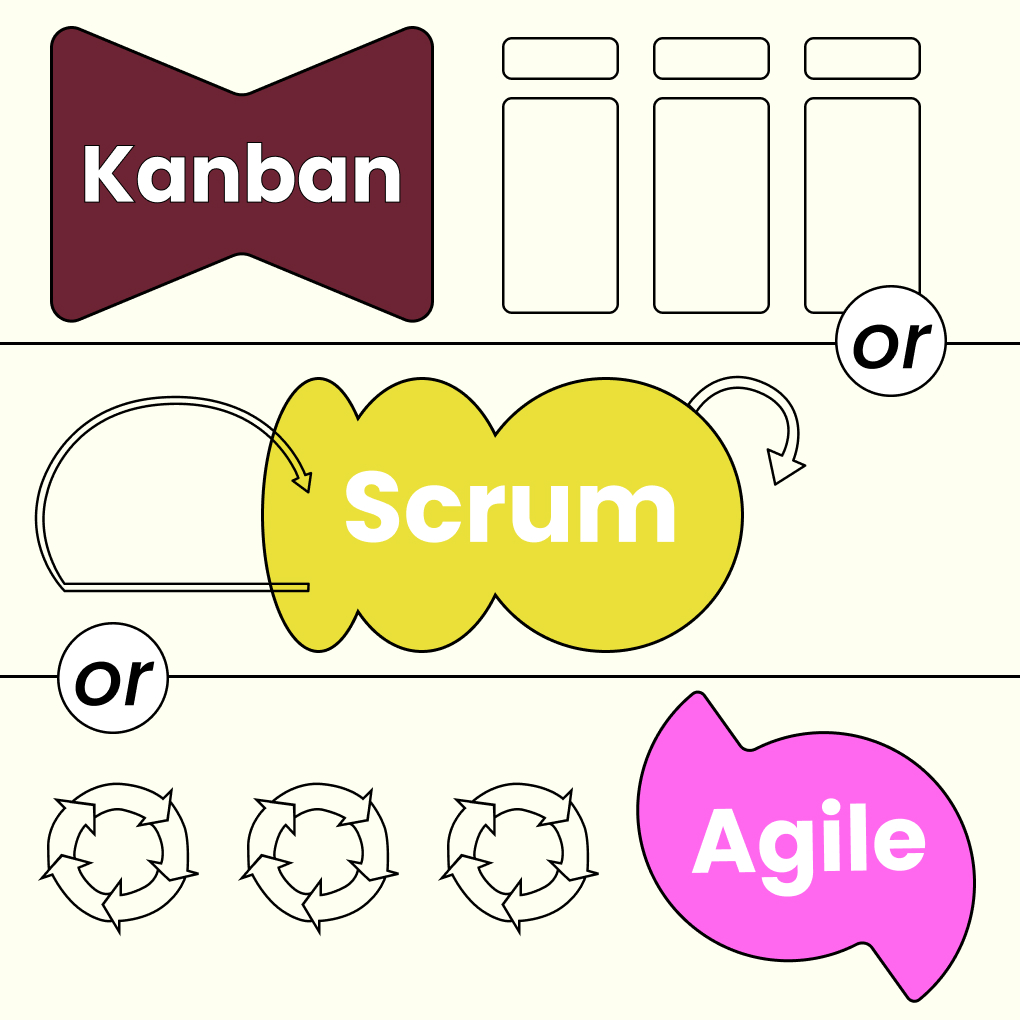Project management has undergone significant changes in recent decades, with the agile approach emerging as a transformative methodology in today’s business landscape. Whether you’re overseeing software development or managing marketing campaigns, grasping agile methodology is essential for achieving successful results in our fast-paced world. This comprehensive guide covers everything you need to know about implementing agile, from its core principles to practical planning steps that will help you excel in agile project management.
What Is Agile Project Management?
Agile project management is an iterative approach that delivers projects incrementally, rather than attempting to complete everything at once at the end. Originating in the software development sector in the early 2000s, agile emphasizes flexibility, collaboration, and quick adaptation to change. This methodology breaks complex projects into smaller, manageable segments known as iterations or sprints, which typically last between one to four weeks.
The Agile Manifesto and Core Values
The Agile Manifesto, created by 17 software developers in 2001, serves as the foundation of agile methodology. It outlines four core values that define agile in project management: prioritizing individuals and interactions over processes and tools, valuing working software over extensive documentation, fostering customer collaboration over contract negotiation, and embracing change over strictly following a plan.
Agile vs. Traditional Project Management
Key Differences in Workflow and Mindset
The primary distinction between agile and traditional project management lies in their planning and execution methods. Traditional project management, often referred to as the waterfall method, follows a linear sequence where each phase must be completed before the next begins. In contrast, agile methodology involves continuous planning, testing, and delivery throughout the project lifecycle.
When to Use Agile
Choosing to implement agile methodology depends on various project characteristics and organizational factors. Agile is most effective for projects with unclear or evolving requirements, where early value delivery is crucial, and where close collaboration with stakeholders is feasible. This approach is particularly beneficial in software development, product development, marketing campaigns, and any project where innovation and adaptability are vital for success.
Core Principles and Pillars of Agile
4 Agile Pillars
Agile methodology is built on four key pillars that guide team dynamics.
- The first pillar emphasizes individuals and interactions, highlighting that successful projects rely more on motivated team members and effective communication than on rigid processes.
- The second pillar prioritizes delivering working products over extensive documentation, ensuring teams focus on creating value rather than paperwork.
- The third pillar promotes customer collaboration throughout the project, fostering partnerships rather than traditional vendor-client relationships.
- The fourth pillar encourages responding to change instead of strictly adhering to a predetermined plan, recognizing that the best solutions often arise from iterative learning and adaptation.
12 Agile Principles

In addition to the four pillars, agile methodology is guided by twelve specific principles that offer practical implementation guidance. These principles include satisfying customers through early and continuous delivery, welcoming changing requirements even late in development, and frequently delivering working solutions.
Common Agile Methodologies
Scrum
Scrum is one of the most recognized agile methodologies, providing a structured framework for applying agile principles. In Scrum, work is organized into sprints, typically lasting two to four weeks, with defined roles such as Product Owner, Scrum Master, and Development Team.
Kanban
Kanban takes a different approach by focusing on visualizing workflow and limiting work in progress. Instead of working in fixed-time sprints, Kanban teams pull tasks from a backlog as capacity allows, creating a continuous flow of delivery. This methodology is particularly effective for teams managing varying priorities or unpredictable workloads.
Lean
Lean methodology aims to maximize value while minimizing waste, aligning naturally with agile principles. Originally developed for manufacturing, Lean has been successfully adapted for knowledge work and project management. It emphasizes identifying and eliminating non-value-adding activities, optimizing the entire value stream, and empowering teams to implement improvements.
Extreme Programming (XP)
Extreme Programming (XP) is a more prescriptive agile methodology, especially popular in software development. XP focuses on technical practices such as pair programming, test-driven development, and continuous integration. It features short release cycles, simple design principles, and extensive customer involvement.
Adaptive Project Framework (APF)
The Adaptive Project Framework (APF) offers a flexible approach to agile project management that can be customized for different project types and organizational contexts. This methodology emphasizes adapting the project approach based on learning and changing conditions throughout the project lifecycle.
Agile Planning: A Step-by-Step Guide
👁️Define the Product Vision
The first step in any agile development project is to create a clear product vision. This vision should outline the project’s goals, identify its target audience, and explain its significance. A well-defined vision guides all future decisions.
🗺️ Create the Product Roadmap
After establishing the vision, teams develop a product roadmap that highlights major milestones and feature releases. This overview helps stakeholders understand the product’s planned evolution while allowing for flexibility. The roadmap should outline key themes and objectives for different time frames, typically organized by quarters or releases. Unlike traditional project plans, agile roadmaps are dynamic documents that adapt based on insights, market feedback, and shifting priorities.
🗃️ Build a Backlog
The product backlog is the central repository for all features, requirements, and improvements needed for the project. A well-structured backlog is essential for effective agile planning. Each item in the backlog should be clearly defined, estimated for effort, and prioritized based on value and dependencies.
🏃 Plan Releases and Sprints
Release and sprint planning convert the high-level roadmap into actionable work plans. Release planning determines which backlog items will be included in upcoming releases, typically covering several sprints. Sprint planning focuses on the immediate next iteration, with teams selecting backlog items they can commit to completing within the sprint timeframe. This multi-level planning approach balances the need for predictability with agile flexibility, allowing teams to stay focused while adapting to new information and changing priorities.
⏱️Task Estimation and Prioritization
Accurate estimation and prioritization are vital in agile project management. Teams use techniques like story points, t-shirt sizing, or relative estimation to gauge the effort required for different tasks. Prioritization considers factors such as business value, technical dependencies, risk, and stakeholder needs.
💡 Hold Sprint Planning Meetings
Sprint planning meetings kick off each iteration and set the stage for successful execution. During these meetings, teams review the prioritized backlog, discuss technical strategies, and commit to specific deliverables for the upcoming sprint. Effective sprint planning involves the entire team, ensuring everyone understands the sprint goals, acceptance criteria, and their individual responsibilities.
Agile Implementation Tips
Building the Right Agile Team
The success of agile methodology relies heavily on the right team composition and dynamics. Agile teams should be cross-functional, possessing all the skills needed to deliver value independently. Team members must be comfortable collaborating, communicating openly, and sharing responsibility for outcomes. An ideal agile team size is typically between 5 to 9 people—large enough to include diverse skills but small enough to facilitate effective communication.
Daily Stand-Ups and Iterations
Daily stand-up meetings are a cornerstone of agile methodologies, providing regular opportunities for team coordination and obstacle identification. These brief meetings help team members stay aligned, share progress, and seek assistance when needed. The iterative nature of agile work encourages teams to develop rhythms and practices that support continuous delivery and improvement.
Managing Stakeholders in Agile
Managing stakeholders in agile projects requires a different approach than traditional methods. Instead of providing detailed upfront specifications and waiting for final delivery, agile emphasizes ongoing collaboration and feedback. Regular demonstrations of working features help stakeholders understand progress and offer input that shapes future development.
Measuring Agile Project Success
Measuring success in agile projects requires metrics that reflect both delivery progress and value creation. Traditional metrics like adherence to original scope and schedule may not be suitable for agile projects that embrace change. Instead, agile teams often focus on metrics such as velocity, customer satisfaction, business value delivered, and team health indicators.
Agile in Software vs. Non-Software Projects
Examples in Software Development
Software development is the most common application of agile methodology, with numerous successful implementations across various projects. Web applications, mobile apps, and enterprise software all benefit from agile’s iterative approach and adaptability to changing requirements. In software development, agile enables teams to deliver working features quickly, gather user feedback, and incorporate insights into future iterations.
Applications in Marketing, Product Development, and Events
The principles of agile methodology have been successfully adapted for non-software projects across various industries. Marketing teams use agile approaches to manage campaigns, content creation, and digital marketing initiatives, allowing for rapid testing and optimization based on performance data. Product teams apply agile methodology to physical product development, utilizing prototyping and user testing to validate assumptions and iterate on designs.
Challenges and Limitations of Agile
Team Alignment and Buy-In
A major challenge in implementing agile is securing genuine commitment from all team members and stakeholders. Agile requires a shift from traditional command-and-control structures to collaborative, self-organizing teams. Some individuals may resist the increased collaboration and transparency that agile demands, while others may find it difficult to adapt to the ambiguity and frequent changes. Strong leadership support is essential to navigate these challenges, along with investment in training and coaching to help team members cultivate agile mindsets and skills.
Scope Creep Risks
Although agile welcomes changing requirements, poorly managed projects can experience scope creep, jeopardizing delivery timelines and budgets. The iterative nature of agile can lead stakeholders to request additional features or changes, especially if governance and prioritization processes are lacking. To manage scope effectively while maintaining agile flexibility, it is crucial to establish clear product ownership, maintain regular communication with stakeholders, and practice disciplined backlog management.
Strong Communication Culture Required
Agile methodology relies heavily on effective communication and collaboration, which can be difficult for teams or organizations that lack these skills. Factors such as remote work, cultural differences, and organizational silos can hinder the communication necessary for agile success. Teams must focus on enhancing their communication skills, implementing effective collaboration tools and practices, and fostering a culture of psychological safety that encourages open dialogue and feedback.
Final Thoughts: Is Agile Right for Your Team?
Determining whether to adopt agile methodology requires a candid assessment of your project characteristics, team capabilities, and organizational culture. Agile thrives when teams are dedicated to collaboration, stakeholders are actively engaged, and the project benefits from iterative delivery and adaptation.
Whether you are just starting to explore agile methodology or looking to refine your existing practices, remember that agile is fundamentally about people working together effectively to create valuable solutions in an unpredictable environment.




